Last updated on May 31, 2022
What Is the Setting of a Story? How to Write 3 Types of Settings
About the author
Reedsy's editorial team is a diverse group of industry experts devoted to helping authors write and publish beautiful books.
More about the Reedsy Editorial Team →Savannah Cordova
Savannah is a senior editor with Reedsy and a published writer whose work has appeared on Slate, Kirkus, and BookTrib. Her short fiction has appeared in the Owl Canyon Press anthology, "No Bars and a Dead Battery".
View profile →“When you leave a beautiful place, you carry it with you wherever you go,” lifestyle author Alexandra Stoddard once wrote. She was referring to real-life places, but the same is true of fictional ones — the setting of a story can be just as affecting and memorable as a place you’ve actually visited.
But how do authors choose the right settings for their stories, and what tactics do they use to bring them to life? Find out in this comprehensive guide to story setting, complete with definition, examples, and tips for writing a setting that readers will remember forever!
What is the setting of a story?
The setting of a story refers to the time, place, and environment in which narrative events unfold. Authors use setting to immerse readers in a specific time period, geographical location, or even a vividly imagined world. For example, The Martian by Andy Weir is set in space.
Setting serves as the backdrop to everything that happens in a story, and often contributes significantly to its atmosphere. This is why romance novels are typically set in small, cozy towns and horror stories in isolated, unnerving places (a Transylvanian castle, a cabin in the woods). Indeed, setting can be so powerful, it may even feel like a character itself!
What are the 3 types of settings?
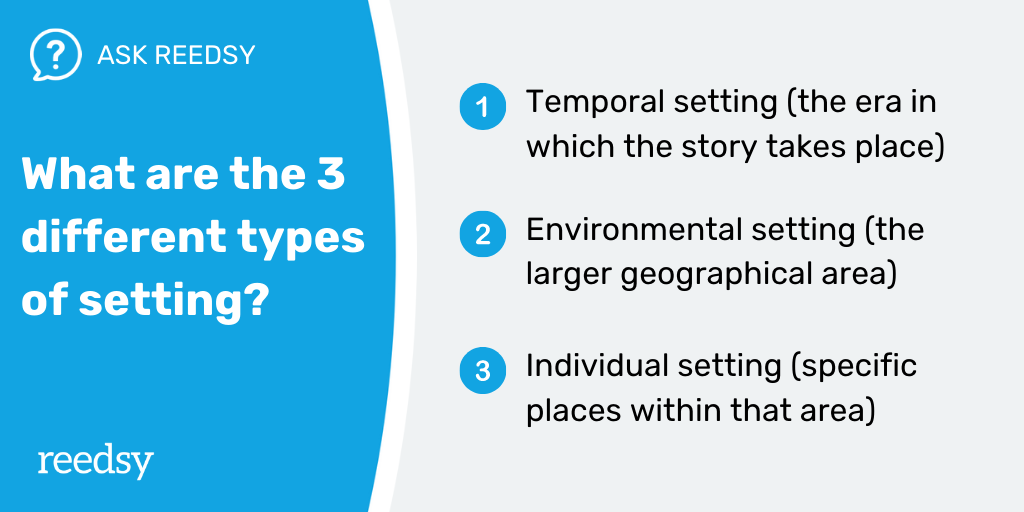
You might think of setting in terms of 3 “types”: temporal, environmental, and individual. To demonstrate these concretely, let’s look at the various settings of The Great Gatsby (insert concrete jungle joke here 🏙️).
- Temporal setting: the American 1920s, right in the heart of the Jazz Age.
- Environmental setting: southeastern New York — New York City and Long Island.
- Individual settings: Gatsby’s mansion, Tom and Daisy’s mansion, Myrtle’s apartment, the Plaza Hotel, and more.
Note that just as characters can be entire products of an author’s imagination, so often are these individual settings! (The Manhattan Plaza Hotel obviously exists in real life, but the characters’ residences in The Great Gatsby do not.) Authors frequently combine real-time, real place, and invented — or at least embellished — individual settings to ground the story in authenticity while maintaining flexibility on the details.
🎵
Tell us about your book, and we'll give you a writing playlist
It'll only take a minute!
Story setting examples
You can probably think of a dozen more setting examples. But just to solidify the notion, here are three particularly strong ones, along with passages to show how each author paints the setting of their story.
Maycomb, Alabama in To Kill a Mockingbird
Harper Lee’s unparalleled classic about American race relations in the 1930s occurs in the small town of Maycomb, Alabama. Notice how the narrator, Scout, describes Maycomb as stiflingly humid and old-fashioned, establishing the era's status quo of oppression and suffering:
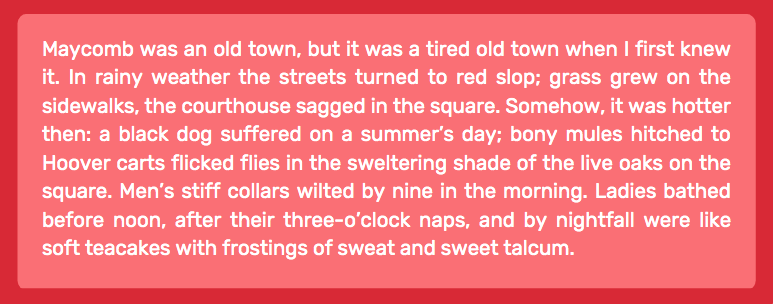
Narnia in The Lion, The Witch and the Wardrobe
Meanwhile in The Lion, The Witch and the Wardrobe, C.S. Lewis introduces Narnia as a winter wonderland full of possibilities — though it’s somewhat deceiving in that the White Witch has cursed the land to eternal cold. But it’s crucial to the narrative that Narnia appears as a still, snowy place that lulls Edmund into a false sense of security just before he meets the Witch:
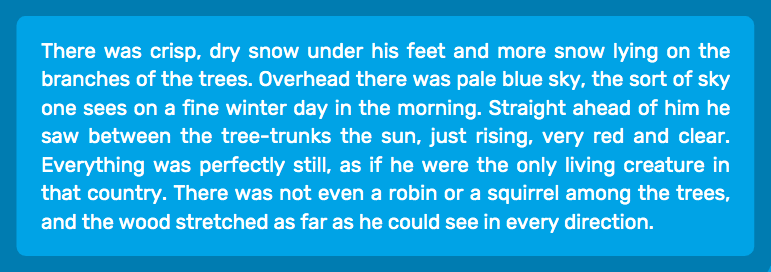
North West London in NW
For a more contemporary example, let’s look at a description of North West London in Zadie Smith’s novel NW. As part of the novel’s vision of London as a polyphonic city “containing multitudes,” Smith describes the area in terms of both former inhabitants and present-day scenery. To arrive at the complex present, she must first acknowledge the past:
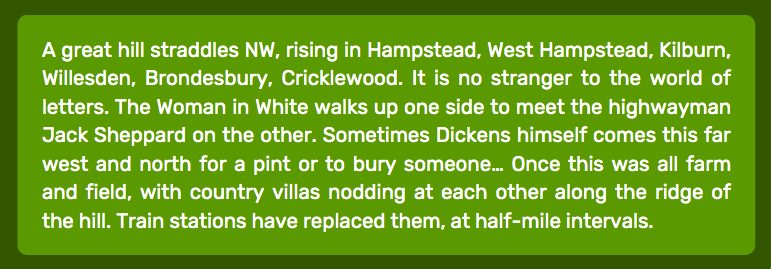
Of course, each of these passages provides only a glimpse of the rest of the book. As an author, don’t just drop a paragraph of scenery description at the beginning and never mention the setting again!
For setting to be effective, it needs to filter through the entire story — fortunately, this next section on how to write setting will show you how to do just that.
Q: What techniques can authors use to personify nature and make it feel like an active character in their story?
Suggested answer
Write it so it feels like it has agency of its own—not like it actually does, but just so it feels like if it wanted to exert some form of will on the human characters, it could. That's a little nebulous, I know, but it's neither an easy thing to do nor describe. 🙂
Brett is available to hire on Reedsy ⏺
How to write setting in a story
1. Choose your setting wisely
Let’s talk about setting suitability: as the examples above clearly demonstrate, every great story hinges on setting. The Great Gatsby would not work if it were set during the Great Depression, and it’s almost impossible to imagine most of Zadie Smith’s books taking place anywhere other than London.
So before you start writing your story, make sure the setting fits like a glove. For some authors, this will be easy! But for others — especially those creating a brand new world for a sci-fi or fantasy novel — choosing your setting may be a bit trickier.
To set you (no pun intended) on the right path, here are a few important questions to consider:
- Exactly where and when will your story take place? Take this time to nail down the details. If it’s “contemporary,” does that mean present day or ten years ago? If it’s in a certain country, what city or town? And if you have multiple settings, how long will the characters spend in each one?
- Is this setting a real place, and if so, how much research will it require to convey in good faith? How much overlap will there be if it’s merely based on a real place?
- How will the setting of the story factor into the characters’ lives? Will it help them or prevent them from achieving their goals? If neither, why choose this setting at all?
Once you’ve answered these to your satisfaction, you can settle on your setting (as it were) and begin constructing it in more detail.
2. Focus on what’s unique
Not every element of your setting will be worth noting, so focus on what’s unique. Every city has buildings and sidewalks, but how are they different from every other city’s? If someone leans their head out the window, what do they hear besides traffic or birds? Does the town square smell like bread from the local bakery, or like pollution from a nearby factory?
Get the details straight
Again, think of your story setting almost as another character. Just as you might create a character bible to flesh out their quirks, you can profile your setting too! Here are some “setting profile” questions to get you started:
📜 What’s the history of this area?
🌦 What is the weather like each season?
🌇 What are the biggest landmarks of this setting?
🏡 In what sorts of residences do most people live?
🚙 How do people tend to get around (walking, driving, etc.)?
👍 Why do people like (or dislike) living (or visiting) here?
For a more exhaustive list of setting-related questions, you can check out our free worldbuilding guide — the perfect tool for creating fictional settings.
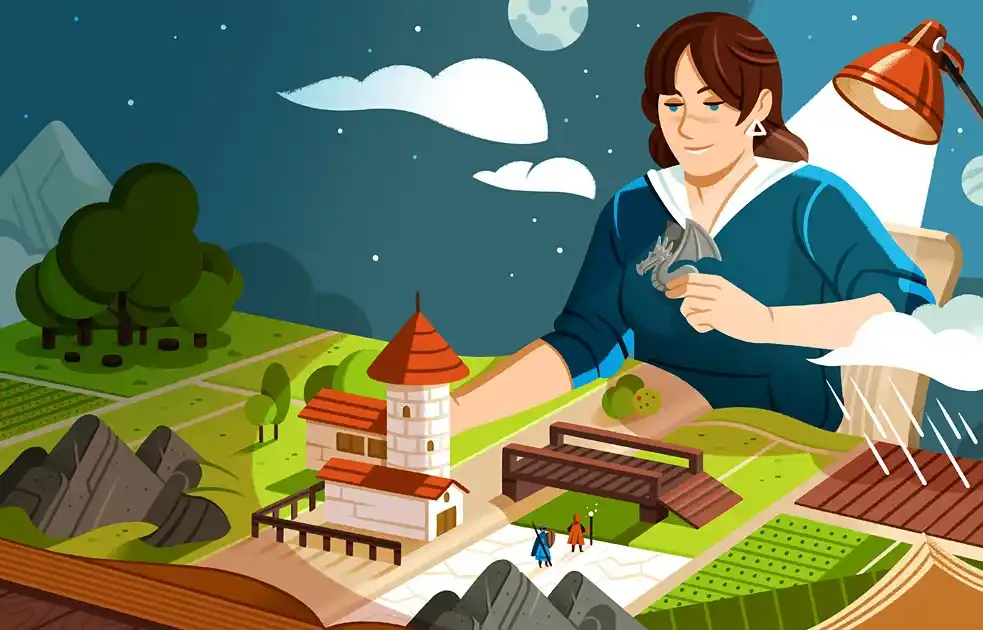
FREE RESOURCE
The Ultimate Worldbuilding Template
130 questions to help create a world readers want to visit again and again.
The natural addition to these questions is: and how does this affect my characters? This is where you’ll tap into the most interesting features of your setting — by considering how your characters will perceive and react to what’s around them. To quote Carmen Maria Machado: “Setting is not inert. It is activated by point of view.”
Now that you have a clear sense of what you want to highlight in your environmental setting, you can incorporate these features into your story.
Pro tip: When writing about places you’ve never been or have only seen as a tourist, over-emphasizing famous landmarks like Big Ben, the Eiffel Tower, and the Empire State Building will make your work read like that of an amateur. To avoid this, play around on Google Street View and discover some more quotidian hangouts for your characters!
3. Use all five senses in descriptions

As you describe each setting of your story, make sure you don’t just talk about how it looks. Instead, use all five senses: sight, sound, smell, touch, and even taste. This is especially important when writing a first person account, but also applies to other POV's — and you can check out our free course below to learn more.
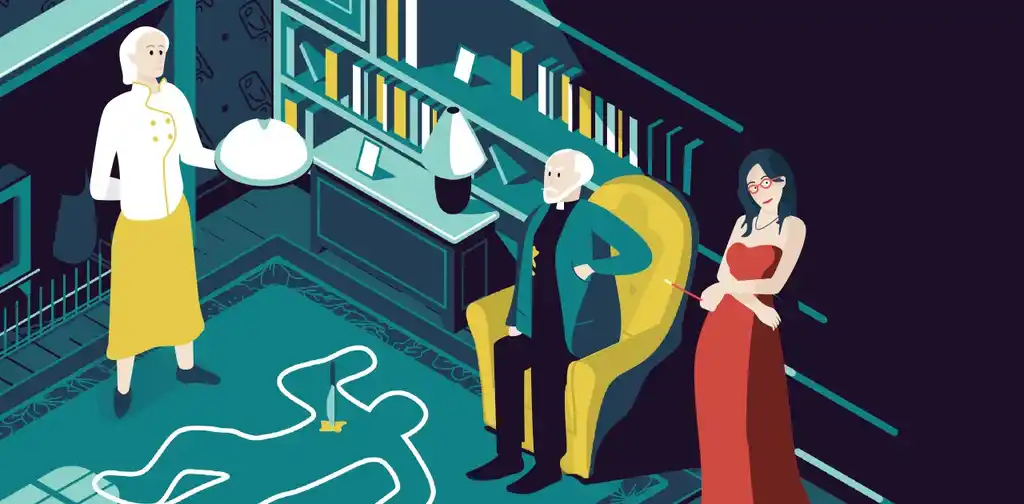
FREE COURSE
Understanding Point of View
Learn to master different POVs and choose the best for your story.
You shouldn’t use all of these in every description, nor should you continuously rehash settings you’ve already described. But as a rule of thumb, each time your characters visit a new location — or experience that location in a new context (e.g. at night rather than in the daytime) — you should devote a paragraph to setting the scene.
Here’s a great example of concise and multi-sensory setting description from Leigh Bardugo’s Ninth House:
Inside, the music thumped and wailed, the heat of bodies washing over them in a gust of perfume and moist air. The big square room was dimly lit, packed with people circling skull-shaped vats of punch, the back garden strewn with strings of twinkling lights beyond. Darlington was already starting to sweat.
In just three sentences, we get four out of five senses:
- Sight (“dimly lit, packed with people”);
- Sound (“the music thumped and wailed”);
- Smell (“a gust of perfume and moist air”);
- Touch/physical sensation (“already starting to sweat”).
The rest of this party scene consists of mostly dialogue and action, but Bardugo is careful to describe each new room the characters enter, so the reader always has a clear picture of what’s happening. Indeed, the more you show rather than tell with sense-based setting descriptions, the more you’ll immerse readers in your story. Just don’t go overboard with pages and pages of detail — zero in on what’s most interesting and unique.
🖊️
Which famous author do you write like?
Find out which literary luminary is your stylistic soulmate. Takes one minute!
4. Develop your characters’ relationships to the setting
Once you’ve established the characters in your story, you can dig into their relationships with the setting.
These relationships can take many forms. Say your main character has lived in the same town their entire life; they might have a longtime fondness for it, or they could resent and feel trapped by the setting. These kind of characterstics or desires can be established using a character development exercise, like the profile template you'll find below, which prompts you to dig deep into your character's background. Whatever you decide, make sure this nuance comes through in your narration!

FREE RESOURCE
Reedsy’s Character Profile Template
A story is only as strong as its characters. Fill this out to develop yours.
What you don’t want is a character so detached from their surroundings that their story could take place anywhere. At bare minimum, you need them to interact with the setting in specific, realistic ways. For greater impact, use setting to challenge them, assist them, or both.
💪 Setting as a challenge vs. setting as an asset
Susan Choi does an amazing job of positioning setting as a challenge in Trust Exercise, which begins with two young characters trying to walk to each other in a vast, highway-dense city:
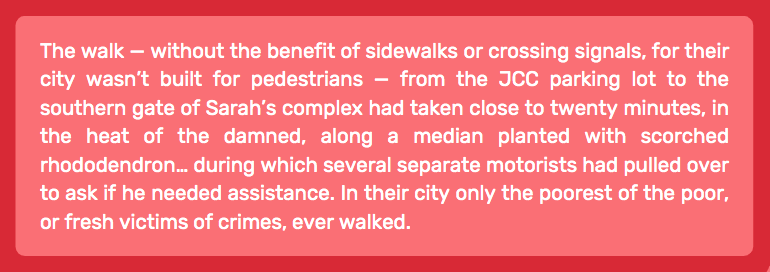
But setting doesn’t need to oppose your characters in order to feel relevant and meaningful. Here’s an example of setting as an asset, from Madeline Miller’s Circe, describing Circe exploring her new island:
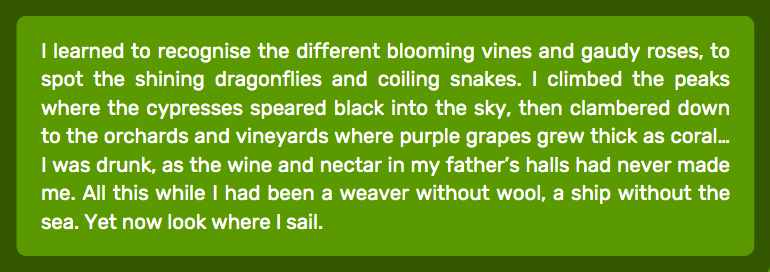
And remember, you’re not limited to one or the other! Over the course of a story, a setting may play varying roles in a character’s life, both positive and negative. Just make sure it doesn’t sit there as an idle backdrop.
5. Keep your readers oriented
The final cardinal rule of story setting is: keep your readers oriented. You don’t want people to get distracted from your plot because they’re too busy trying to untangle where the action is happening!
Ironically, one of the quickest ways to confuse readers is to give them too much setting detail. So when introducing a setting, keep the description concise, as in the Ninth House example — a few evocative sentences will do. If you have more to say about the setting, you can incorporate it later.
In terms of specific directions, again, less is more. “He walked out of his apartment building, turned left onto the road, then right onto the sidewalk, then another left onto another sidewalk” hardly makes for riveting storytelling. If you must use directions, at least ensure they’re consistent! Don’t say the police station is on the east side of town, only to describe the sun setting (a famously western phenomenon) behind it in the next scene.
These kinds of issues can really throw readers off, even subconsciously — so make sure you get them straight. If you’re worried about setting inconsistencies, you can hire a copy editor to comb through your work.
Hire an expert copy editor
Ann Howard C.
Available to hire
Traditional-publication-focused editor with 17 yrs of experience specializing in fantasy, science fiction, suspense, and historical fiction.
Avner L.
Available to hire
Professional editor, ghostwriter, and author of literary fiction and non-fiction who can help get you and your book across the finish line.
Sean L.
Available to hire
Proofreader/editor for 11+ years, reader for 40+, and as a lifelong fan, horror is my go-to genre.
🗺️ Consider drawing a map
Whether you’re building an elaborate world from scratch or simply want to be as accurate as possible when representing a real place, a map of your setting could help (you might even commission an illustrator to draw one for you). This will give you a more concrete sense of your setting while you’re writing, as well as streamline the reader’s experience down the line.
Here are some of our favorite fictional maps, for reference:
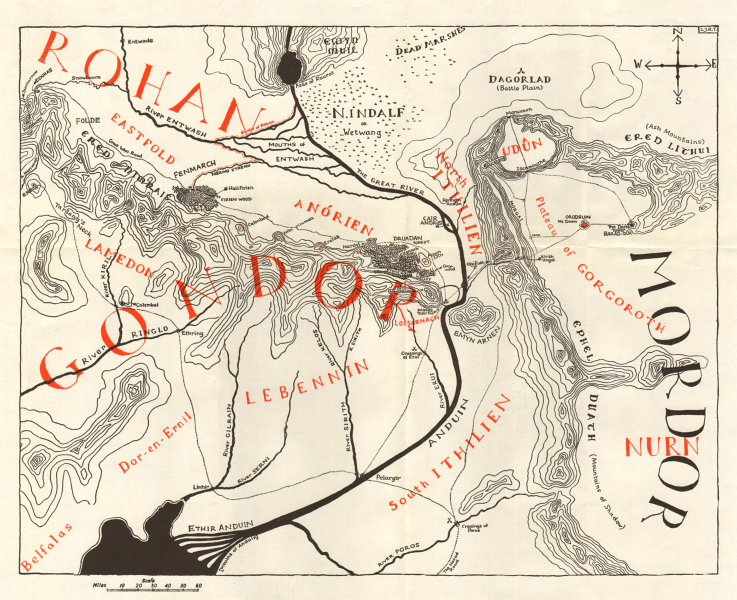
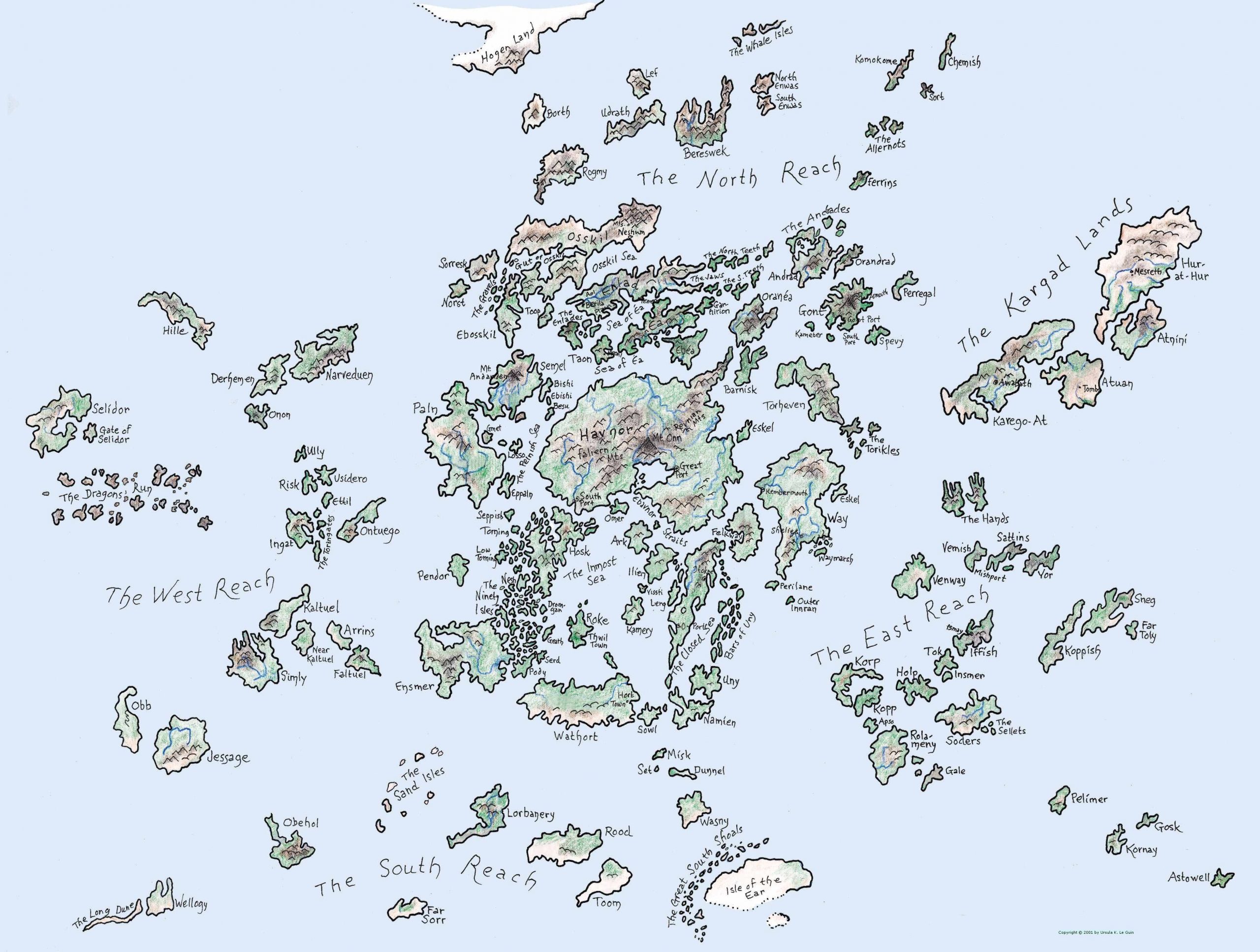
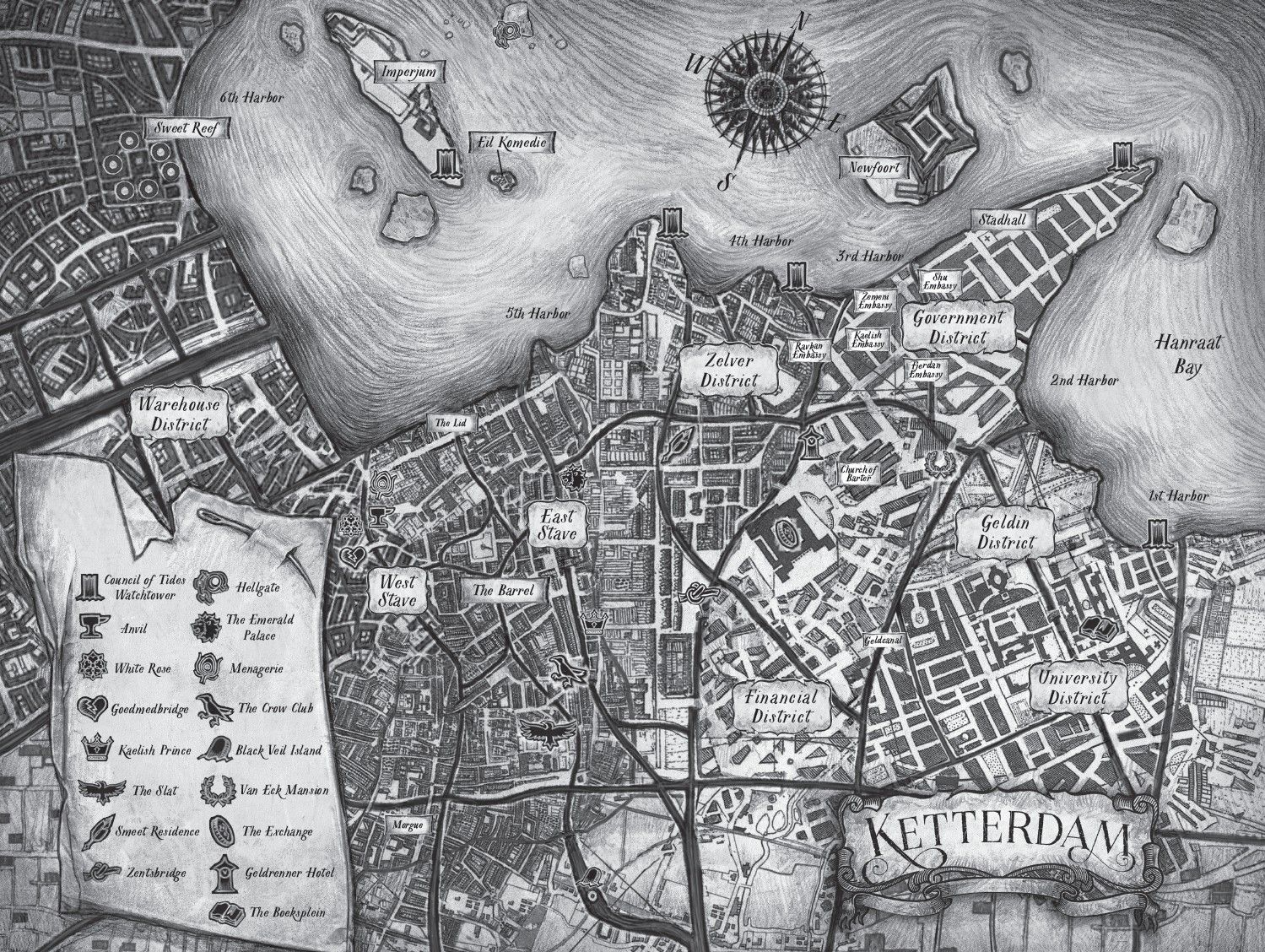
And there you have it — everything you need to know about writing the setting of a story! With a solid sense of time and place and compelling, character-based descriptions, you’ll be well on your way to conjuring a setting, like Narnia or Jazz-Age NYC, that readers won’t forget. It's an essential step to becoming a better writer.








